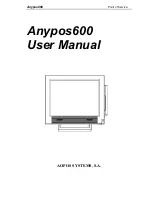
[email protected] | Installation manual Omnicomm 2.0 terminals v2.2
7
.16 | 14
After exporting the XML
fi
le and importing the vehicle in Omnicomm Online, in the vehicle pro
fi
le, the value of
4095 Cohn must be assigned to the value of the fuel volume in the tank in litres. If the fuel tank has a complex
shape, a calibration table of the tank must be created in Omnicomm Online.
4.1
3
CONNECTION OF THE TEMPERATURE SENSORS 1WIRE TO OMNICOMM
PROFI 2.0, PROFI 2.0 WIFI AND OPTIM 2.0 TERMINALS
Connection of the temperature sensor to the Omnicomm Pro
fi
2.0, Optim 2.0 Terminals is conducted in
accordance with Figure 84. Omnicomm Pro
fi
2.0 and Optim 2.0 Terminals support connection of up to 10
temperature sensors on a single-wire (hub) power circuit. You may simultaneously use the interface 1Wire
to connect temperature sensors and the iButton reader. The maximum line length of 1wire is 100 m.
4.1
4
CONNECTING ADDITIONAL EQUIPMENT TO THE UNIVERSAL INPUTS
Omnicomm Pro
fi
2.0 and Pro
fi
2.0 WiFi Terminals support connection of up to six devices as optional
equipment.
Omnicomm Optim 2.0 Terminals support connection of up to four devices as optional equipment.
Omnicomm Light 2.0 Terminals support connection of two devices as optional equipment.
To control additional equipment when connecting to a universal input, it is recommended that you use the
available signals, for example, from the control elements, or install additional sensors (see “UM Omnicomm
2.0 Terminal”).
For third-party sensors, it is necessary to establish connection according to user manual of the sensor.
4.1
4
.1 Connection of sensors with analog output
Sensor types:
• with standardised current output
• with standardised voltage output
• LLS-AF 20310 fuel level sensor
Measured values: temperature, pressure, humidity, etc.
Connection of
the sensor with standardised current output
is conducted in accordance with Figure 94.
This wiring diagram only applies to vehicles with on-board network voltage of 24 V.
For sensors that can be powered by a voltage of 10 V,
connect the sensor to the standardised voltage
output
according to Figure 93.
Do not connect: standard engine temperature sensors, high-voltage sensors, non-linear signal sensors, and
power supply sources without shunt resistance.
Connection of DT14V temperature sensor is conducted in accordance with Figure 92.
4.1
4
.2 Connection of sensors with potential or impulse output
Possible types of sensors include: contact and proximity discrete sensors
Connection of proximity sensors
(capacitive, inductive, optical or magnetic type) and “open collect”
sensors with N-P-N outputs is conducted in accordance with Figure 96.















































